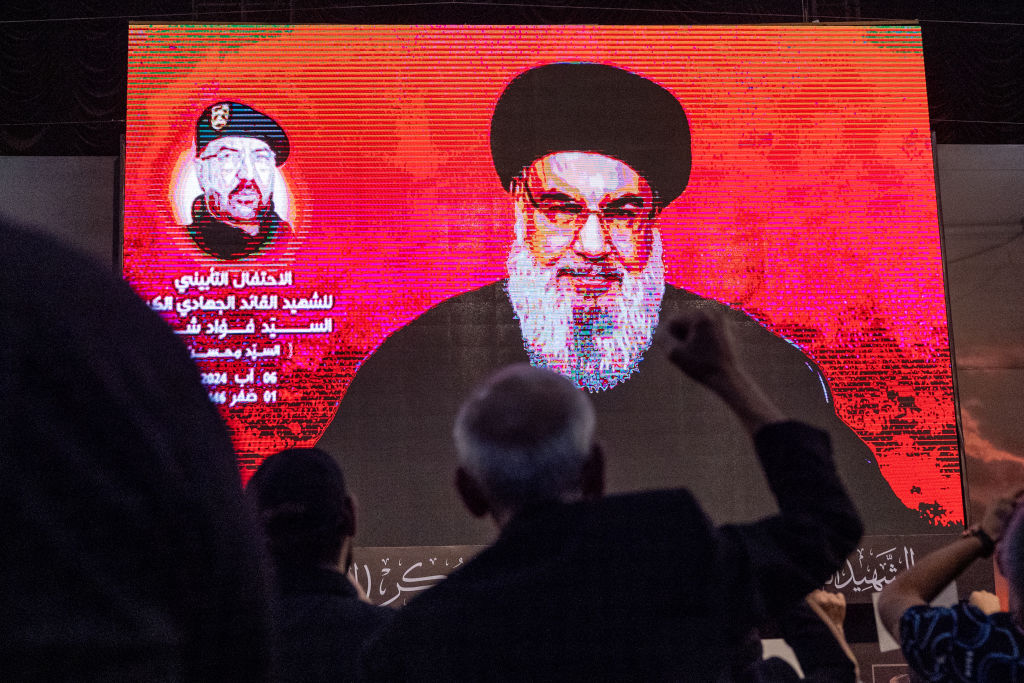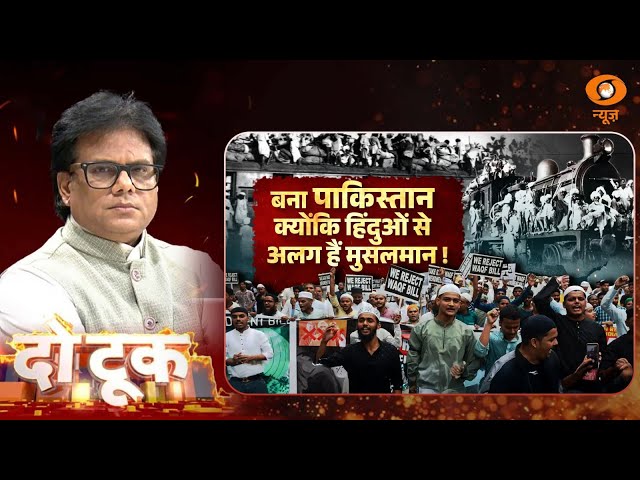The Israel Defence Forces posted a somewhat cryptic message on X. It read that Hassan Nasrallah will no longer be able to terrorise the world. That message was followed, within minutes, by another, more direct, and, unambiguous one from Lt. Col. Nadav Shoshani, the international spokesperson of the I.D.F.
The leader of the Lebanon-based Hezbollah was killed in his lair. In an Israeli strike. On the group’s headquarters. In Beirut. On 28 September. It was Israel’s biggest success since the start of an operation codenamed Northern Arrows.
Nasrallah’s killing raises many questions.
— What are its implications for West Asia, and, the world at large?
— How will Hezbollah respond?
— Will the 2006 Lebanon – Israel war play out all over again?
— Will Iran get involved?
— Will this bold move by Israel force the Hezbollah to pull back from the border with Israel?
— And, most importantly, will this daring operation pave the way for Israelis to return to their homes near the border with Lebanon?
“Tehran”, is an Israeli T.V. series, that, premiered, on Apple T.V.-Plus, in the year 2020. In it, an Iranian General receives a call on his mobile phone. At the other end of the line, is an undercover Israeli spy. The spy detonates the phone, the moment, the Iranian General answers the call.
“Fauda” is another Israeli T.V. drama on Netflix. In one of its episodes, a mobile-phone bomb detonates, when an enemy answers a call — from an Israeli spy of course.
The final episode of the second season of “Tehran” was aired on 17 June 2022. Word is that the third season of Tehran has been delayed. But the wait for the fifth season of “Fauda” might soon be over. Fauda’s creator Avi Issacharoff is writing the next season of the series these days. Issacharoff posted a message on X, on 17 September, barely four hours after thousands of pagers exploded, simultaneously, in a synchronised manner, in Lebanon. Nothing comes close to reality, he wrote.
He is right. What the world saw unfold in Lebanon, and Syria, on that day was nothing short of spectacular. And audacious. It could have been straight out of a John Le Caree book or a James Bond film. More electronic devices exploded the next day, 18 September. Everything from smartphones and laptops to biometric devices and walkie-talkies blew up.
More than 30 people were killed and 3,000 wounded. Many with serious injuries. A majority of them were Hezbollah cadres. The attack on communication devices put 1,500 fighters out of commission because of their injuries. Many were blinded or had their hands blown off. There were civilians among the dead, too, including an eight-year-old girl, an 11-year-old boy and four health workers.
Who was behind the attacks? One can only make an informed guess. Israel has neither confirmed nor denied responsibility for the attack. But Hezbollah squarely blames Israel for it. Perhaps with good reason. In 1996, Israel used the same method — a booby-trapped mobile phone — to kill Hamas’s Yahya Ayyash.
The pagers exploded, hours after Israel announced the expansion of its Gaza war goals. A new goal is to enable the return of thousands of Israelis to their homes in areas bordering Lebanon. These are people that were evacuated from areas that were in range of Hezbollah units. Between 60,000 to 70,000 Israelis have been evacuated from northern Israel in the past year. This, after near-daily exchanges of fire by Hezbollah, which followed the 7 October 2023 attacks by Hamas.
Israel’s Prime Minister Benjamin Netanyahu says his Government will ensure that they return to their homes. Israel’s Defence Minister Yoav Gallant says that a new phase in the Gaza war has started. Its centre of gravity is moving northward, towards the border with Lebanon. Israel’s Army Chief Herzi Halevi, in turn, says that his forces are determined to act.
For its part, Hezbollah links its stopping of rocket attacks on Israel to a Gaza ceasefire. It has moved men and materiel, close to the border with Israel, after the Hamas attacks. It has redeployed fighters to frontline areas in the south. And it has been firing rockets and missiles, intermittently since then.
At the heart of the issue is the Litani river. The Litani originates, and, flows, entirely within the borders of Lebanon. It rises in the Beqaa Valley, west of Baalbek. And it empties into the Mediterranean Sea, north of Tyre. At 140 kilometres, the Litani is the longest river in Lebanon. The river is about 30 kilometres from Lebanon’s border with Israel.
Israel wants to push the Hezbollah as far north of the river. It wants to clear the area of Hezbollah fighters and prevent their return so that northern Israel is out of the range of rockets fired by Hezbollah. Israel has good reasons for wanting that. The U.N. Security Council Resolution 1701, which was adopted in 2006, created a buffer zone between the U.N.-drawn Blue Line in southern Lebanon and the Litani river.
The Blue Line is the 120-kilometre line of withdrawal that was identified in the year 2000 by the United Nations in co-operation with Lebanese and Israeli officials for the purpose of confirming the withdrawal of Israel’s Military from Lebanese territory.
The Blue Line does not constitute the official border between Lebanon and Israel.
The Resolution says that this area, between the Blue Line and the Litani river, must be free of any armed personnel, assets and weapons, other than those of Lebanon’s Military and the United Nations Interim Force in Lebanon.
As of 2 September 2024, UNIFIL consists of 10 thousand and 58 peacekeepers from 50 troop-contributing countries. UNIFIL has 903 Indian peacekeepers. India is the third-largest contributor of troops to UNIFIL after Indonesia and Italy.
The first UNIFIL troops arrived in the area in March 1978. After the 2006 war between Hezbollah and Israel, the U.N. Security Council enhanced UNIFIL’s mandate. UNIFIL is deployed in southern Lebanon. Its area of operations is defined by the Litani River in the north and the Blue Line in the south. Any unauthorised crossing of the Blue Line by land or by air, from any side, constitutes a violation of U.N. Security Council Resolution 1701.
Kobi Michael is an analyst at Tel Aviv University’s Institute for National Security Studies. He says that the idea that Israel cannot realise its sovereignty over the northern parts of the country is something that cannot be tolerated. The residents of the northern Israeli city of Nahariya air similar sentiments. Some of them want Israel to deal with Hezbollah once and for all.
“I think that we must to finish with this problem with the Hezbollah and also with Gaza. We must to finish with this, not for the people there, but for the government, for the men that… We must to finish with this, to kill them to stop them, to do something. But not this. Not stop the war,” says 70-year-old Elie Sebbag, a retired hairdresser.
A shoe store owner, Gil Jakov says, “I have a shop here. I lose a lot of money. We lost all our happiness. People are very, very sad about the situation and we don’t want to stop the fire. We want to stop this situation for life. Not for one or two years, that’s all.”
Israel’s Foreign Minister Israel Katz is categorical. He says that there will be no ceasefire in the north. “We will continue to fight against the terrorist organisation Hezbollah with all our might until victory and the safe return of the residents of the north to their homes,” says Katz.
Andreas Krieg is with the King’s College London. He sounds a note of caution. He says that completely neutralising Hezbollah might not be easy. “I think if the idea for the I.D.F. is to then just grab territory and holding it in southern Lebanon, moving, pushing Hezbollah physically up to the Litani River, this is at least something that Israel might be temporarily be able to achieve, but is a situation that the I.D.F. will not be able to maintain for long.
So will have to eventually withdraw again and then obviously Hezbollah can move back in. So it’s an operation at large cost that at very best would probably achieve operational objectives, military objectives, but will be far from achieving any strategic objectives because Hezbollah will not be unseated in Lebanon and Hezbollah will not be destroyed.”
The U.S., France and their allies have all called for a 21-day ceasefire across the Israel–Lebanon border. They have expressed support for a ceasefire in Gaza, too, after holding talks among themselves this week. U.S. President Joe Biden says an all-out war is possible but he remains hopeful of a settlement. But the heaviest fighting in nearly two decades, between Israel and Hezbollah, coupled with the killing of Hassan Nasrallah, raise fears of a new, wider conflict.
Hezbollah’s main supporter and weapons supplier is Iran. The group is the most powerful faction in Tehran’s so-called Axis of Resistance. Hezbollah has faced off against Israel since the Shi’ite Muslim movement was created by Iran. It was founded in 1982 to counter an Israeli invasion of Lebanon. The group has since evolved into Iran’s most powerful proxy in West Asia.
A report for the U.S. legislature says that Hezbollah has 40 to 50 thousand fighters. Nasrallah had claimed that he has 1 hundred-thousand fighters. It has been bringing rockets into Lebanon at a fast pace, anticipating a drawn-out conflict. So, Hezbollah is the most formidable enemy Israel has faced on the battlefield, not because of numbers and technology but in terms of resilience.
“I think the difference here is that Hezbollah forces are far more battle hardened. They are much more sophisticated in terms of how they operate more independently, because they operate also like Hamas in a way. But obviously, Hamas has never been in this high intensity combat before.
And most of the Hamas force Hezbollah has, and Hezbollah has, as I said, they’re a network, which means the different operational cells, can operate fairly well, independently and autonomously against essentially a hierarchy of the I.D.F. that will have to adapt to Hezbollah’s way of fighting. And while the I.D.F. has obviously prepared for years for this war, they do know how costly it’s going to be, and it’s not going to be a walk in the park,” says Krieg.
Israel’s Prime Minister Benjamin Netanyahu says he has instructed his Army to fight on. Hardliners in his Government say Israel should reject any truce and keep hitting Hezbollah. Netanyahu’s office released a photo of him inside his office at the U.N. headquarters in New York City, while using a landline telephone to approve the strike, targeting Nasrallah. Before long, Israeli jets conducted several heavy airstrikes on the headquarters of Hezbollah.
Nasrallah was 64 years old. He became the secretary-general of Hezbollah in 1992 when he was in his 30s. He wore the black turban of a Sayyed or a descendant of the Prophet Mohammad. Nasrallah grew up in Beirut’s impoverished Karantina district.
His family hails from Bazouriyeh, a village in Lebanon’s predominantly Shi’ite south which today forms Hezbollah’s political heartland. He is part of a generation of young Lebanese Shi’ites whose political outlook was shaped by Iran’s 1979 Islamic Revolution.
Who will get to return home first? Hostages from Gaza? Or Israelis who fled the areas bordering Lebanon? Netanyahu says Israel has no choice and every right to enable its citizens to return to their homes. For his part, Israel’s Defence Minister Yoav Gallant says that the Military has not forgotten its goals in Gaza. And that they have not forgotten about the hostages in Gaza either.
Gallant says that now it is time to ensure that those displaced from the north return to their homes. But U.S. Secretary of State Antony Blinken has his doubts. He fears that an escalation will only make it harder for Israeli civilians to return home.
By – Ramesh Ramachandran (Senior Consulting Editor and presenter with D.D. India)




















